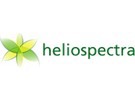Microgreens are gaining popularity and have created a steady demand from end-consumers. Its fast turnaround times for harvest has made it an ideal crop for all types of controlled environments in agriculture including indoor growing, greenhouses, hydroponics and vertical farming.
Microgreens in highest demand are fresh, textured, explicitly flavored and comes in bold colors perfect for grocery stores and restaurants. Sole source lighting and supplemental lighting allows growers to use light strategies to manipulate desired plant traits by adjusting the light spectrum (quality and quantity) across the growth stages, thereby enabling them to gain control over their grow.
Heliospectra’s plant and light research experts research different spectra to empower growers to use programmable LED lighting solutions to steer plant growth and development, and plan their business.
The following test was carried out with the aim to test different light quality on microgreen mustard.
If you are a commercial micro-green grower or are considering starting an urban farm, this light test will give you an insight of what effects a particular light spectrum may have on the appearance as well as the taste of microgreens.
Light spectrum test on microgreens
The test was done in Heliospectra’s in-house Plant Lab on micro leaf mustard cultivar ´Red frills´. The crop was grown under Elixia, Heliospectra’s fully adjustable lighting solution, using two different light spectra. One containing 3 wavelengths Far–red, white and a high amount of blue, and one with 4 wavelengths containing additional far-red and a lower amount of blue.
26 days after seedling, there was a clear visible difference between the treatments.
Visual appearance
Far-red can be used to influence the length of stem and size of leaf in various plant species. This was visible in the plants grown with Far-red. The plants had a growth length of 55 % greater than the high blue with more larger leaves. On the other hand, if the goal for the grower is to delay harvest or produce a shorter plant, a heavy blue spectrum may be used to keep a plant more compact. Plants grown under the high blue spectrum had a compact growth and had also darker leaf color.
Taste
A compelling outcome wasn’t only morphology related but on the taste of the Microgreen mustard as well.
A group of 21 people were asked to taste the microgreens and answer the questions; which treatment resulted in the spiciest taste and which treatment is more preferred in taste and in appearance.
From the responses, 86 % of the testers indicated that the microgreen mustard grown with high blue had the spiciest taste. 48 % of the testers preferred the appearance of the microgreen mustard grown with high blue, whilst 52 % of the testers preferred the appearance of the mustard grown with Far-red. Another general opinion from the testers was that the relation to preferable appearance is dependent on what the microgreen has to be used for. Thus, the spicier high blue grown could be used as flavoring while the milder Far-red grown can be used in salad.
Conclusion
A light spectrum can influence the appearance as well as the taste of plants. Knowing your goals can help you achieve quite different outcomes and different light strategies can be used to achieve highest crop quality for a specific purpose.
Click here to download a summary of the test.
 For more information:
For more information:Box 5401 SE-402 29 Göteborg Sweden
Phone: +46 31 40 67 10
Fax: +46 31 83 37 82
info@heliospectra.com
www.heliospectra.com
